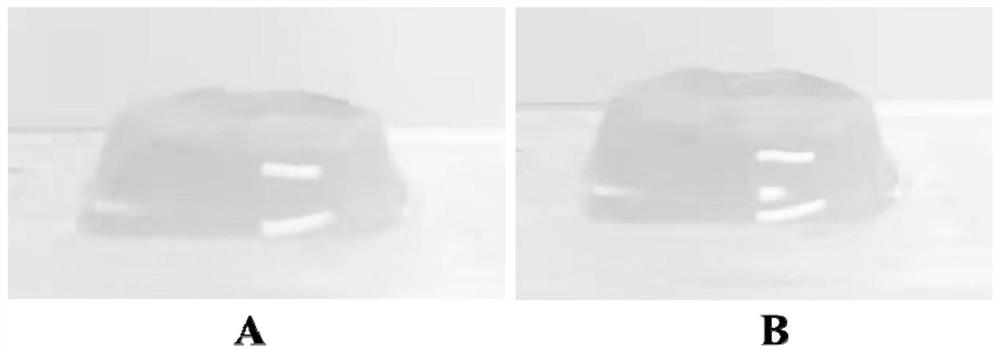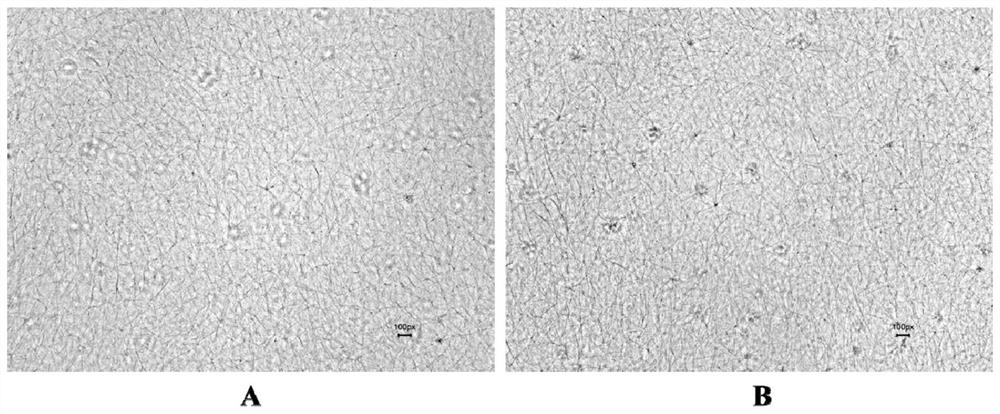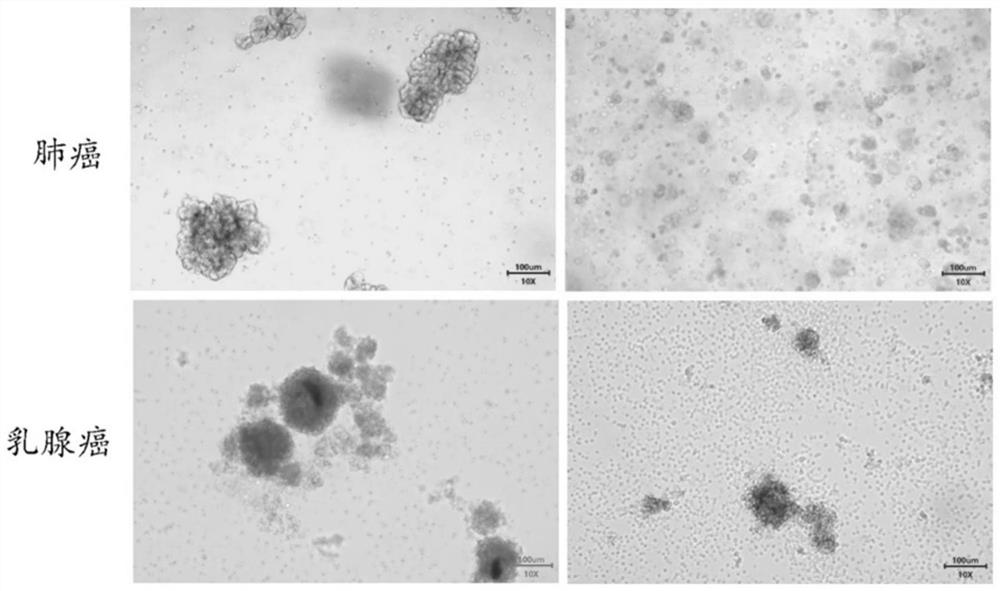Method for individually culturing tumor organoid by using hydrogel prepared from autologous chest and ascites of tumor patient
A tumor patient, hydrogel technology, applied in the field of biomedicine, can solve the problems affecting the accuracy and objectivity of cell culture results, limit wide application, low culture success rate, etc., achieve objective and accurate culture results, good water permeability, good biocompatibility
- Summary
- Abstract
- Description
- Claims
- Application Information
AI Technical Summary
Problems solved by technology
Method used
Image
Examples
Embodiment 1
[0052] Embodiment 1, the optimization of hydrogel preparation method
[0053]Take 100 mL of malignant pleural and ascites fluid from 10 tumor patients, centrifuge at 400 g for 5 min at room temperature, and collect the supernatant. Various concentrations of glutaraldehyde were added. 293T cells (ATCC, USA) were cultured two-dimensionally to the logarithmic growth phase, and then digested with 0.25% (% expressed in g / 100ml) trypsin (Sigma) to obtain a single cell suspension with a final concentration of 5 × 10 3 / mL mixed with the above groups (glutaraldehyde of different concentrations added to the supernatant of pleural and ascites fluid) and then spread on the bottom of the well of the cell culture plate to observe the coagulation time of each group. DMEM (Thermo Scientific) containing 10% (v / v) fetal calf serum (Thermo Scientific) and 1% (m / v) penicillin / streptomycin (Gibco) was added on top of the gel. At 37°C, 5% CO 2 Observe the state of cells in each group after cult...
Embodiment 2
[0054] Embodiment 2, the preparation method of autologous hydrogel
[0055] 1. Prepare 100× glutaraldehyde storage solution
[0056] Measure 20-80 mL of glutaraldehyde, add it to 100 mL with deionized water, the concentration of glutaraldehyde is 20-80% (v / v), filter and sterilize with a filter membrane with a pore size of 0.22 μm.
[0057] 2. Separation of thoracic and ascites in tumor patients
[0058] Take 10 mL of malignant pleural and ascites fluid from tumor patients, centrifuge at 400 g for 5 min at room temperature, and collect the supernatant.
[0059] 3. Preparation of autologous hydrogel scaffold
[0060] Mix 990 μL of pleural effusion (or ascites) supernatant with 10 μL of 100× glutaraldehyde stock solution (50%, v / v) thoroughly and add to the wells of the cell culture plate, and place it flat at 37°C for 25 minutes until it solidifies into a jelly shape( figure 1 ), under the microscope, it can be seen that a loose network structure is formed inside the hydrog...
Embodiment 3
[0061] Example 3. Individualized culture of tumor organoids
[0062] 1. Organoid culture of autologous tumor cells in thoracic and ascites fluid
[0063] In this example, the effect of personalized organoid culture of autologous tumor cells in pleural effusion of patients with lung cancer and breast cancer and ascites of patients with ovarian cancer and liver cancer was tested.
[0064] 1. Centrifuge all the pleural fluid and ascites collected from the patient's first pleural and peritoneal effusion drainage at room temperature for 10 minutes at 400 g. Keep the supernatant for later use.
[0065] 2. The cell pellet at the bottom of the centrifuge tube was adjusted to a cell concentration of 10 with RPMI-1640 medium (Gibco). 7 individual / mL. Add Ficoll-Paque TM PLUS (GE Healthcare) mononuclear cell separation medium to the centrifuge tube, then slowly add the cell suspension at a volume ratio of 1:1, and centrifuge at 400g room temperature for 25min. The cells at the interf...
PUM
 Login to View More
Login to View More Abstract
Description
Claims
Application Information
 Login to View More
Login to View More - R&D
- Intellectual Property
- Life Sciences
- Materials
- Tech Scout
- Unparalleled Data Quality
- Higher Quality Content
- 60% Fewer Hallucinations
Browse by: Latest US Patents, China's latest patents, Technical Efficacy Thesaurus, Application Domain, Technology Topic, Popular Technical Reports.
© 2025 PatSnap. All rights reserved.Legal|Privacy policy|Modern Slavery Act Transparency Statement|Sitemap|About US| Contact US: help@patsnap.com



